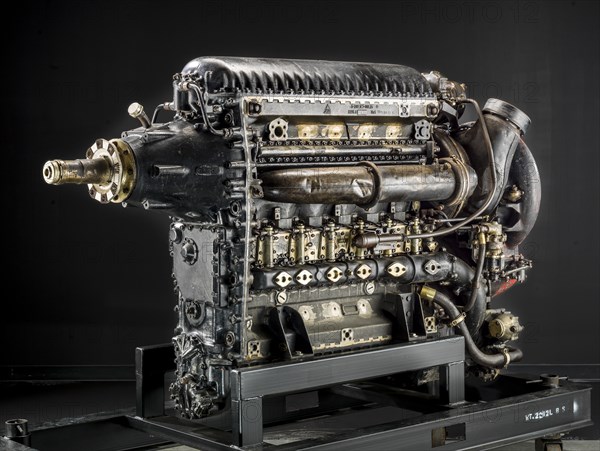
Sujet
Junkers Jumo 207 D-V2 In-line 6 Diesel Engine, ca. World War II. Creator: Junkers.
Légende
Dr. Hugo Junkers started development of his Diesel aircraft engines in a small factory at Dessau, Germany in 1911. His early engines functioned on the two-stroke cycle principle with piston-controlled parts, as did his later Junkers Jumo Diesels. Among the advantages of later, refined Diesel aircraft engines were lower specific fuel consumption (for long-range applications), lower exhaust gas temperature (for exhaust-driven supercharger installations), and reduced fire hazard as compared to conventional reciprocating aircraft engines. The Jumo 207 was a Jumo 205 with a turbo-supercharger. A Diesel operating on a two-stroke cycle, it incorporated six cylinders and 12 opposed pistons (i.e. 2 per cylinder) in an in-line, liquid-cooled configuration. The Jumo 207 could maintain its sea-level rated power to approximately 7,900 m (26,000 ft.). The Jumo 207 A and B powered the Junkers Ju 86 P and R reconnaissance/bomber aircraft that had an absolute ceiling of approximately 15,000 m (49,000 ft.).
Crédit
Photo12/Heritage Images/Heritage Art
Notre référence
HRM21A88_086
Model release
NA
Property release
NA
Licence
Droits gérés
Format disponible
77,5Mo (3,2Mo) / 50,8cm x 38,2cm / 6000 x 4514 (300dpi)